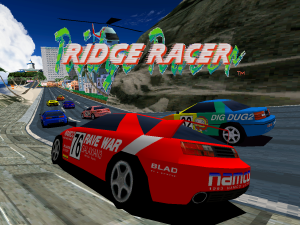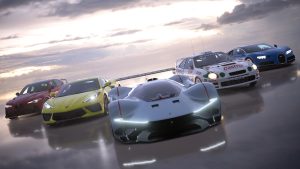
Racing games have come a long way since the earliest days of arcade cabinets and home consoles
From pixelated graphics and simple controls, to highly realistic physics engines and immersive online multiplayer experiences, the evolution of racing games has been driven by both technological advancements and the demands of players
The first racing games, such as Atari’s Night Driver (1976) and Sega’s Monaco GP (1979), were simple and primitive by today’s standards. They used basic graphics and controls to simulate the experience of driving a car. These games paved the way for more sophisticated titles, such as Pole Position (1982), which featured full-color graphics and a racing seat controller that provided a more immersive experience.

As technology advanced, racing games became more complex and realistic. The early 1990s saw the rise of 3D graphics and polygonal models, which allowed for greater detail and smoother animations. Games like Ridge Racer (1993) and Sega Rally Championship (1995) demonstrated the potential of these new graphics technologies, creating vibrant and immersive racing environments.

The late 1990s and early 2000s brought about a shift towards realism in racing games. Developers began to focus on creating physics engines that accurately simulated the behavior of cars and their interactions with the environment. Games like
 (1997) and Forza Motorsport (2005) offered detailed car models and accurate representations of real-world tracks, while also introducing features like vehicle tuning and customization.
(1997) and Forza Motorsport (2005) offered detailed car models and accurate representations of real-world tracks, while also introducing features like vehicle tuning and customization.
As internet connectivity became more widespread, racing games also began to incorporate online multiplayer modes. Players could race against others from around the world, adding a new dimension of competition and community to the genre. Games like Need for Speed: Underground (2003) and Burnout Paradise (2008) offered online racing, as well as other features like car customization and open-world exploration.

The latest generation of racing games continues to push the boundaries of what is possible. Games like Project Cars (2015) and Assetto Corsa (2014) offer highly realistic physics engines and detailed track models, while games like Forza Horizon (2012) and The Crew (2014) combine open-world exploration with racing gameplay. Virtual reality technology has also begun to make its mark on the genre, offering a more immersive experience than ever before.

In conclusion, the evolution of racing games has been driven by a combination of technological advancements and the demands of players. From simple arcade games to highly realistic simulations, racing games have come a long way over the past few decades. As new technologies and gameplay concepts emerge, it will be exciting to see where the genre goes next.





